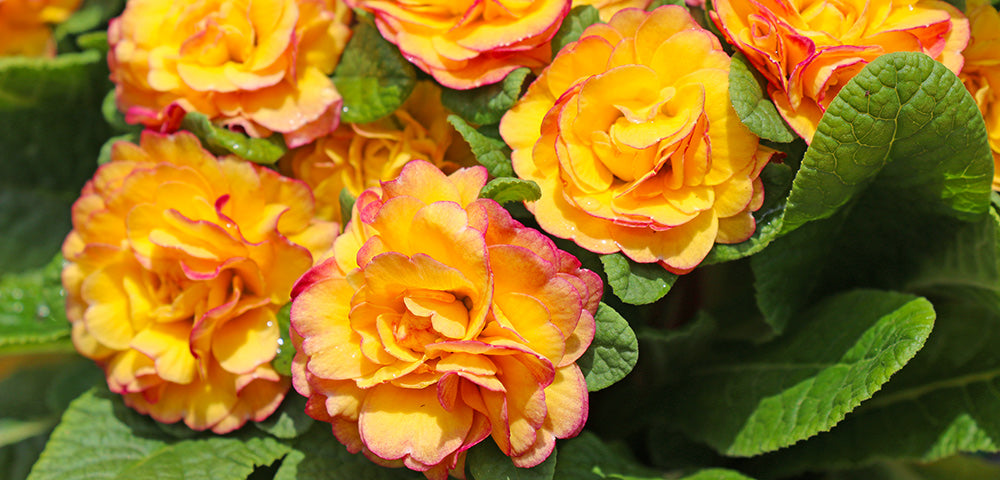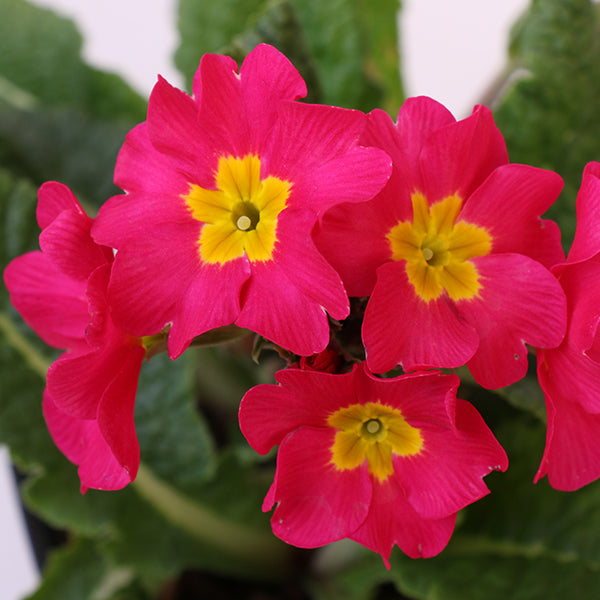Primrose (Primula spp.)
Primrose Plant Features
Primroses are shining stars in the early-spring garden. These cool-loving flowers offer candy-colored blooms that shine in partly shaded gardens. There's a wide range of varieties available, with blooms in just about any color, including blue, purple, pink, red, white, orange, and yellow. Bicolored varieties and types with double, rose-like flowers are also available.Relatively low-growing plants, primroses thrive in the front of the border, as en edging plant, or in container gardens. The key to enjoying primrose is that it likes cool weather -- when temperatures stay under 80F. Once summer comes, the plants sulk and can go dormant, so be sure to plant them with heat-loving shade flowers so you don't end up with empty spaces in the garden. Primroses are hardy in Zones 3-8.
Primrose Growing Instructions
Grow primroses in a spot that has moist, well-drained soil that's rich in organic matter. Like many spring-blooming flowers, they don't hold up to drought well, so be sure to keep primroses well watered. If you have soil that has lots of sand or clay in it, add compost before planting to help give the plants a boost.Primroses can tolerate full sun in cool temperatures, but the warmer it gets, the more they like part shade. This makes them ideal for planting under deciduous trees such as maples; the trees provide welcome shade as they leaf out when it starts to get warm outside.
If you wish to fertilize primroses, do so in early spring just before or as they bloom. Fertilizing is not necessary once temperatures warm over 80F or so in spring. If you do fertilize, use a general-purpose garden fertilizer and follow the directions on the packaging.
Primroses do not require pruning.
-
Water
Medium water needs
-
Light
Outside: Part sun
-
Colors
Blue
Green
Orange
Pink
Purple
Red
Variegated
White
Yellow
-
Special Features
Deer/rabbit resistant
Complement your Primrose
AjugaPrimroses grow well with ajuga --- the blooms complement each other beautifully, and the ajuga continues to look good as the primrose dies back.
Phlox, Woodland
Primrose and woodland phlox are wonderful spring partners -- both produce colorful blooms, and the woodland phlox adds texture once the primrose goes dormant in summer.




